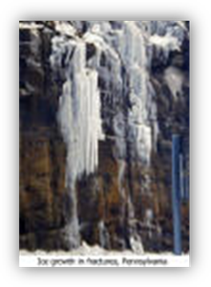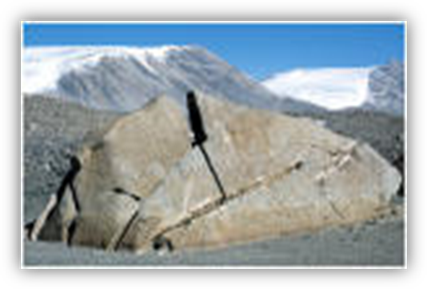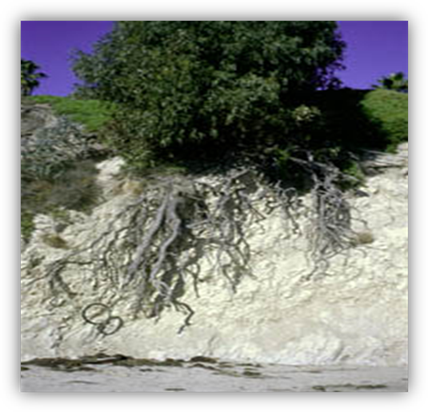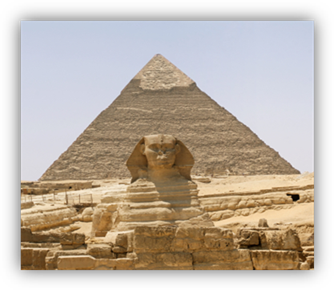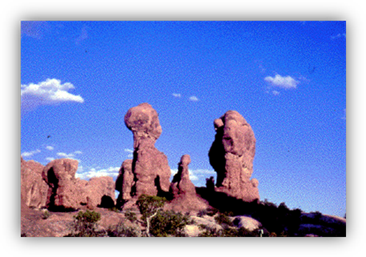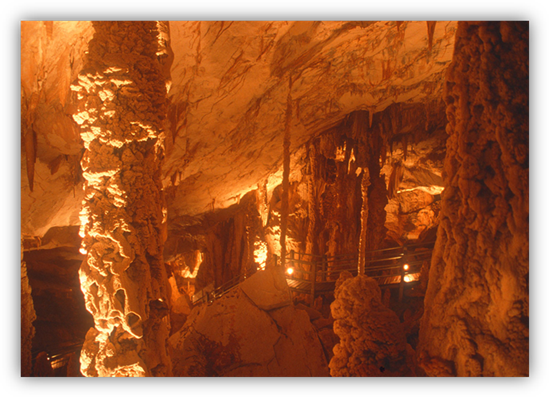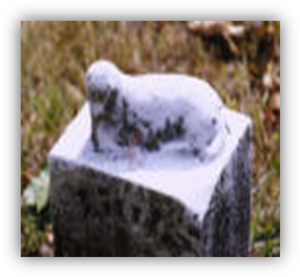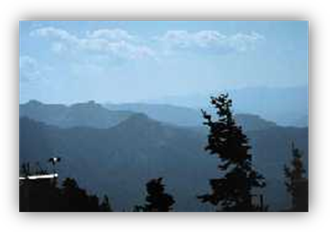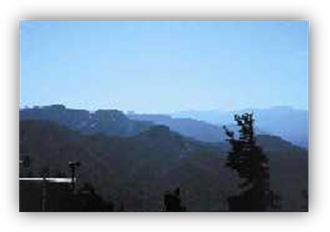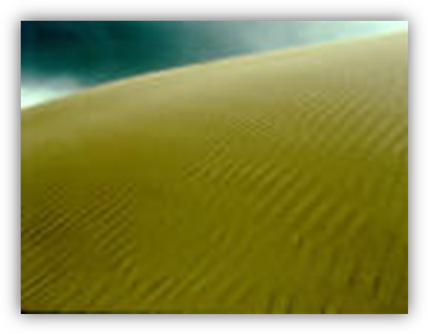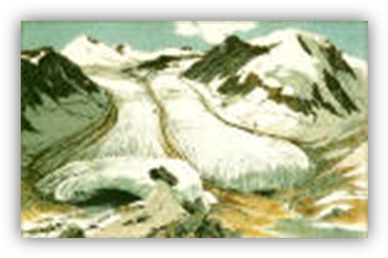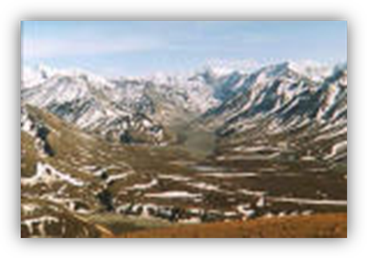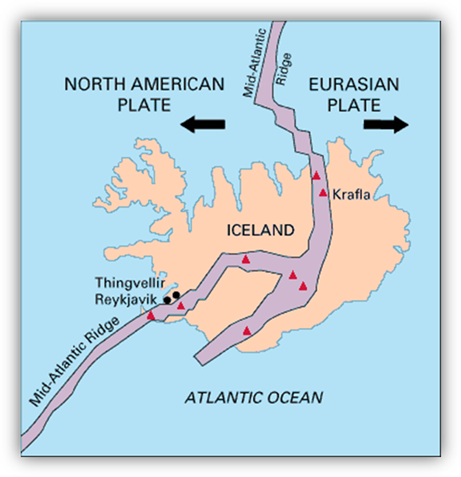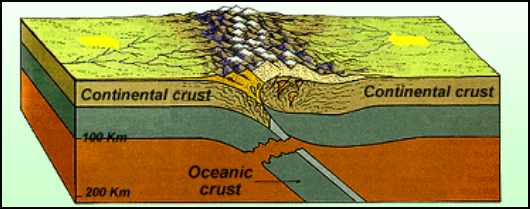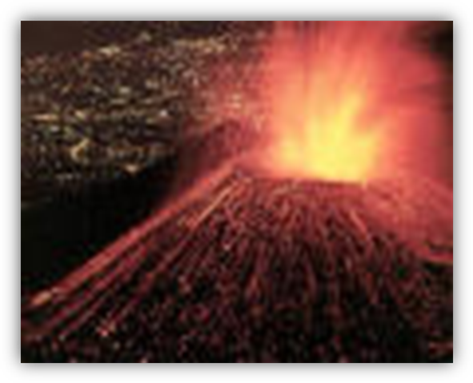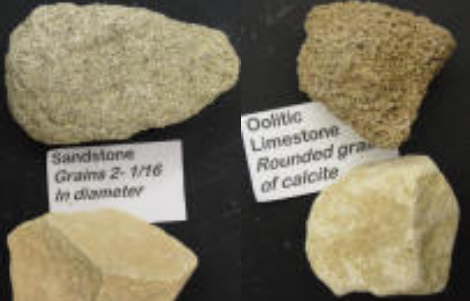LAND
FORMS
![j0436429[1]](SCI180U14Creation_Landforms_new_image003.jpg)
Unit
Overview
This unit looks at
the processes that build up and tear down landmasses on Earth. Both natural and
manmade events have a direct impact on familiar landforms such as beaches,
mountains, canyons, and valleys.
|
GLOSSARY
OF KEY TERMS |
|
Acidic rain (precipitation): acid rain is precipitation containing harmful
amounts of nitric and sulfuric acids formed primarily by nitrogen oxides and
sulfur oxides released into the atmosphere when fossil fuels are burned. |
|
Chemical
weathering: the
wearing away or breaking down of various minerals in rocks and soils due to
the chemical actions of natural physical and biological processes. |
|
Continental
crust: the
Earth's crust that includes both the continents and the continental shelves. |
|
Constructive process: a natural event
in which a new land formation is created by deposits of old rock in a new
location. |
|
Depositional landform: where rock and mineral material has been transported
from one location and deposited onto another such as a coastline or a beach. |
|
Destructive
process: a
natural event in which new land formations are created by the wearing away of
old land formations. |
|
Erosional landforms: formed by slow break down of land formations by
physical and chemical processes. |
|
Fissure: a
long narrow depression in the Earth’s crust. |
|
Frost wedging: is the alternating freezing and thawing of moisture in the openings
or cracks of rocks resulting in a breakdown of the rock. |
|
Glacier: a
large, slowly moving mass of ice. |
|
Mantle: middle
layer of Earth, made of solid and semi-solid hot rock with temperatures from
900 to 3000 degrees Celsius. |
|
Molten rock:
rock that has melted under the Earth’s crust. This melted or molten rock is
called magma. |
|
Physical weathering: breakdown of rock and minerals into small sized
particles through mechanical stress. |
|
Plate tectonics: A theory supported by a wide range of evidence that considers the
earth's crust and upper mantle to be composed of several large, thin,
relatively rigid plates that move relative to one another. |
|
Root intrusion: invasion of plant roots into rock, soil, or other solid matter that
causes breaking or separating of the solid matter. |
|
Sediment:
matter deposited by some natural process. |
|
Structural landform: landforms caused by crustal plate movement and
deformation of plates. |
|
Weathering landform: landforms caused by the disintegration and
breakdown of rock near the earth’s surface. |
|
Study Suggestion: Make vocabulary flash
cards to match the definition with the word. Practice a matching game with
your cards. |
Landforms
Our Earth has many
land formations that are caused by a variety of natural events. Some landforms
that you are familiar with are valleys, mountains, canyons, and rock
formations. Scientists group these formations into four major categories:
weathering, erosional, depositional, and structural
landforms. The landforms are categorized by the events which caused their
formation.
Some landforms are
created when the natural event wears away the original rock. These are known as
destructive processes. Other
landforms are created by adding to the rock formations already present or by
creating brand new rock formations. These processes are referred to as constructive.
Destructive
Land Formation
·
Weathering Landforms: These are
landforms that were created by physical and chemical weathering. Natural events such as wind, acidic rain, and
freezing and thawing can cause rock to break down into smaller rocks and sediment.
·
Erosional Landforms: These landforms
were created by natural events that remove the eroded surface rock. The Grand
Canyon is a good example of this type of landform. The Colorado River is
constantly carrying away rock material and deepening the canyon.
Constructive
Land Formation
· Depositional Landforms: These landforms are created by
the deposits of eroded rock material. Beaches and flood plains are formed in
this way. The rocks are carried by streams and rivers. As the rocks are tumbled
along, they break into smaller pieces until some of them are as small as the
grains of sand that you see on our beaches. Sometimes these deposits are
subjected to pressure, heat, and/or chemicals and will form sedimentary rocks.
Science proclaims that
the Rocky Mountains we see today are not the original mountains that once
occupied the land space of the western United States. That’s right. Geologists
say that at least two or three previous mountain ranges have built up and
eroded away during the life span of the earth.
Beaches were formed from rocks originally in the Rocky Mountains. The
rocks were tumbled and broken up in the streams until they were tiny grains of
sand.
· Structural Landforms: These landforms are created by
plate tectonics. These large crustal plates are in constant motion. As they
move, they can push up large masses of rock and form mountain ranges. This
movement can also allow some of the molten mantle to work its way to the
surface through volcanic activity.
Destructive Processes
·
Weathering
Physical Weathering (mechanical) can occur in
many ways:
|
|
|
Frost wedging:
water seeps into cracks in the rocks and then freezes. The expanding ice
cracks the rocks and breaks them apart. This is the single most abundant form
of physical weathering. |
|
|
|
Root intrusions: plant roots will work their way into rock cracks and push the rock apart. |
|
|
|
Erosion: There
has been a lot of talk over recent years of the weathering of the sphinx on the Giza plateau. Other monuments on the Giza plateau are also suffering
from erosion as the wind combined with
the desert sands has the effect of an industrial strength sand blaster. |
|
Erosion:
wind and rain continuously pound at the face of the rock, breaking it into
small pieces that are washed away. The leftover rock is often left in very
strange shapes like the rock formations above.
|
Chemical Weathering can occur in two ways:
|
|
|
Naturally:
Common elements in nature will react with each other to form new compounds.
As water mixes these elements together, the original rock formation can react
with the elements traveling in the water causing the rock to break down.
Elements such as oxygen and compounds like silicates are big contributors of
natural chemical weathering. A common example of this is when carbon dioxide
from the air dissolves in rainwater. This forms carbonic acid, which will
react with some minerals in the ground. This process produces the many
beautiful rock formations in underground caves. |
|
|
|
Pollution: Many chemicals released by man through
industry and waste products will also react with land formations. Even
man-made structures such as building and statues made of rock can erode from chemical weathering. Acidic rain can react with many rock types to cause
erosion. Acid rain or more specifically, acid precipitation is a chemical
reaction between sulfur dioxide and water or nitrogen oxide and water. When
we burn fossil fuels (gas, coal, oil), the sulfur dioxide and nitrogen
dioxide is released into the air and mixes with water in the air and clouds.
This produces sulfuric acid and nitrous acid and then returns to the Earth
through rain, snow and other forms of precipitation.
Poor visibility in Montana
is caused by fine particles that scatter and absorb light. In Montana, the
biggest sources of impaired visibility include wildfires, prescribed burning,
power plants, motor vehicles, and certain industrial and chemical facilities. |
Constructive
Processes
·
Depositional Landforms
|
|
|
Rock materials can be
deposited in many ways, but water and glacial movements are the two ways most
responsible for many of the landforms we see today. Water breaks small pieces
of rock from existing land forms and then carries them to other areas and
drops or deposits the little pieces of rock into a new location. Beaches are
formed by this process. |
|
|
|
Glaciers are huge masses
of ice that slowly move over the face of our planet. Many of the land
formations we see today were created by glacial movement hundreds or even
thousands of years ago. As these ice mountains move across the ground, they
dig into the ground and pick up pieces of earth and rock. Eventually, the glaciers break into pieces or begin
to melt and then leave the collected rock materials in new locations. Glacial
sediment is made up of a great
many types of rock and dirt. Glaciers
carve out land formations such as valleys and plains. |
·
Structural Landforms
Displacement of rock can be
caused by tectonic
plate movement, and volcanic activity.
|
Tectonic Plate
Movement: As the crustal plates
move, they deform and push rocks into new formations. The illustration below
shows the Mid-Atlantic Ridge. This is a region of great plate movement
activity located under the Atlantic Ocean. |
|
|
|
The next
illustration shows how continental
crust is pushed upward to form mountain ranges. |
|
|
|
Volcanic Activity is caused
by a fissure in
the earth's crust (or in the surface of some other planet) through which
molten lava and gases erupt. |
|
Mountain ranges
can form from volcanic activity. |
|
|
Unit
Review:
1.
All land
formations can fit into two categories. Name and explain each category.
2.
What are the four
main processes that create new land forms?
3.
Describe how a
tree growing near a rock wall can cause weathering of the wall.
4.
Mechanical
weathering is also referred to as ____________ weathering.
5.
_______________
weathering occurs when elements and compounds in nature or man-made react with
rock to break it down.
6.
What are two ways
that rocks can be deposited into a new location to create a new landform?
7.
What natural
events can create mountain ranges?
Weathering Activity
|
CHEMICAL WEATHERING ACTIVITY |
|
Materials
Needed ·
Plastic coffee can lid or Frisbee ·
Two pieces of sandstone and two pieces of limestone To print a copy
of this activity, click on the Weathering PDF
File |
|
These rock types
can most likely be found in your neighborhood. Here is a picture of each:
·
Small bottle of vinegar with dropper ·
Dirt and small rocks ·
An assortment of leaves, rocks, shells, twigs ·
Small plastic containers with holes punched in the
bottom (to form a “rain cloud”). Note: Containers from frozen lunches or
small plastic margarine containers make excellent clouds. ·
Water ·
Paper and pencil |
|
Procedure: ·
Place several drops of vinegar on the sandstone and
observe the action of acid on the rock. Record your observations. ·
Place several drops of vinegar on the limestone and
observe the action of the acid on the rock. Record your observations. Which type of
rock is most affected by chemical
weathering by an acid like vinegar? Which type of
rock produced the most new soil? Which type of
rock took longer to erode? ·
Place one cup of dirt into the middle of your
container. This will represent the amount of dirt it would take to grow a
plant. Estimate the amount of time that it would take you to erode a full cup
of each rock type. ·
Write down your theory on how long it takes nature
to produce one cup of soil. ·
What is the difference between your procedure to
make soil and nature's processes to make soil? ·
Now take your leaves, twigs, and small rocks and
stabilize your land form that you have in your container. This means to make
the formation stronger by pressing the materials into the dirt. ·
Place a small amount of water into the container
with holes. Then slowly pass the container over your land formation. Record
your results and answer the following questions: § Did any erosion
occur? § Which type of
matter (rocks, twigs, leaves) did the best in preventing erosion? If you were to
do this again, would you change the arrangement of the matter that you added
to your landform? Why/Why
not? Was there a
relationship between the amount of rain water poured on your landform and the
amount of erosion that took place? Describe your results. |
